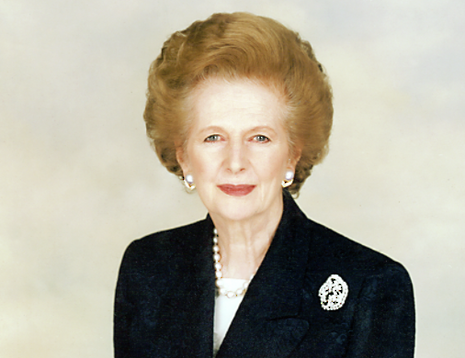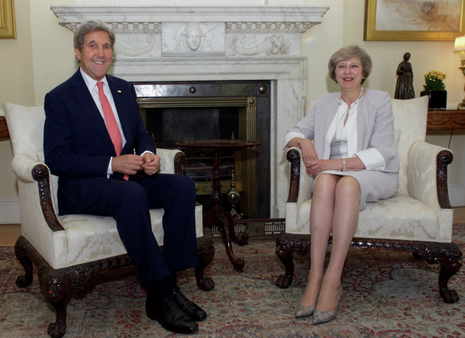Power dressing and the Patriarchy
Emma Simkin tackles the contentious issue of power dressing – does it promote or undermine the female struggle for equality in the workplace?

I was sorting frantically through my closet, trying to find something to wear to an interview that said ‘hire me’. Power dressing, whatever that was, could be the way to go. I delved into the back of my wardrobe, piling dresses (too girly) and t-shirts (too casual) and trousers (too masculine) onto the floor. I was searching for a blazer and a tight pencil skirt, which it turns out I didn’t own because which 19-year-old wants to look like they’ve walked out of Margret Thatcher’s wardrobe?
It took me ages to clamber through mounds of clothes on the floor to find out outfit that shows just the right amount of femininity. Not too much (a dress) because I might look ‘slutty’ or ‘flirty’ and not be taken seriously, but not too little (baggy trousers) because, gasp, people might notice that I’m bisexual and I wouldn’t be taken seriously either. That’s when it dawned on me, that the whole concept of ‘power dressing’ is pretty fucked up.
Power dressing is dressing in a style that gives off an air of importance, of professionalism. In short, looking more masculine, because god forbid that a woman should look powerful in her own skin. No, to be taken seriously, we must look more like men: padded blazers to broaden the shoulders; heels to look taller; trouser suits to add structure; high neck shirts to hide the breasts. The power structures in place demand that we look more masculine to earn respect. It’s not power dressing, but oppression in a padded blazer.
“Women are judged based on how they appear, regardless of what they do and have achieved”
Where does the power come from in power dressing? It comes from two areas. First, dressing to appear more like a cis white male. Power dressing isn’t empowering for women, particularly minorities, because it reinforces social hierarchies that value white maleness above all else.
Second, it treats women as sex objects. High heels, tight skirts and makeup are used to sexualise masculine blazers. Power here is a sensual power – having a power over men in terms of sexuality. Yet, this objectification of the female body through professional fashion overshadows any other kind of social connection, and the power of being taken seriously, as something more than a passive sex object to totter around the office in high heels.

When these two forces clash, telling a woman to be masculine but not too masculine as to appear butch, feminine but not too feminine as to appear slutty, there’s no space left to comfortably exist in the world of work. In short, these two opposing standards of professional womenswear allow us to be criticised for everything and tell us to be nothing.
It comes down to this: women are judged based on how they appear, regardless of what they do and have achieved. Every fashion item that Theresa May wears seems to be as worthy of comment as her policies. When she showed cleavage in March, it made front page news. Who can forget those infamous brown leather trousers? Not to negate the increasing objectification of men’s bodies and fashion choices, but I can’t remember ever reading about a male politician’s attire on the front page (save Jeremy Corbyn and remarks about his scruffy tie). The media firestorm created around what women wear completely eclipses what they achieve.
Power dressing is code for “appear as someone who stereotypically would achieve in business.” i.e. a cisgender white male, so women from minority groups are even more affected. When people think of power dressing, it notably doesn’t bring to mind any ethnic clothing. By having white standards of business wear in an industry that supposedly epitomises power, whiteness is seen as more powerful. In short, power dressing tells us that being powerful means being white.
The same prejudices are faced by religious groups, with certain hairstyles, such as Rastafarian dreadlocks, or religious jewellery being deemed inappropriate as workwear. And what about people of lower socioeconomic backgrounds who can’t afford to find just the right outfit to look professional? They face the choice of splurging money to look like someone they are not, or not be promoted for looking like someone that the structures of society deem as less professional.
At the core, professional dressing is not only sexist, it is racist, xenophobic and classist. The concept of professional business-wear, expressed through power dressing, is so problematic because it promotes societal standards of power that exclude women, particularly minorities, from top jobs. It is yet another shard in the glass ceiling.
From now on, when I go to interviews, I’ll wear what makes me feel confident. If I can’t be taken seriously in a summer dress, I’m not going to take the employers seriously either. When professional standards of business wear tell me I’m both too feminine and too masculine, they tell me I’m too much. Well, if my presence as a female is too much, it’s not my problem. In the end, I went to the interview in jeans and a t-shirt. I am uncompromisingly me, a female
 News / Cambridge academics stand out in King’s 2026 Honours List2 January 2026
News / Cambridge academics stand out in King’s 2026 Honours List2 January 2026 Interviews / You don’t need to peak at Cambridge, says Robin Harding31 December 2025
Interviews / You don’t need to peak at Cambridge, says Robin Harding31 December 2025 Comment / What happened to men at Cambridge?31 December 2025
Comment / What happened to men at Cambridge?31 December 2025 News / Varsity’s biggest stories of 202531 December 2025
News / Varsity’s biggest stories of 202531 December 2025 Features / “It’s a momentary expression of rage”: reforming democracy from Cambridge4 January 2026
Features / “It’s a momentary expression of rage”: reforming democracy from Cambridge4 January 2026









